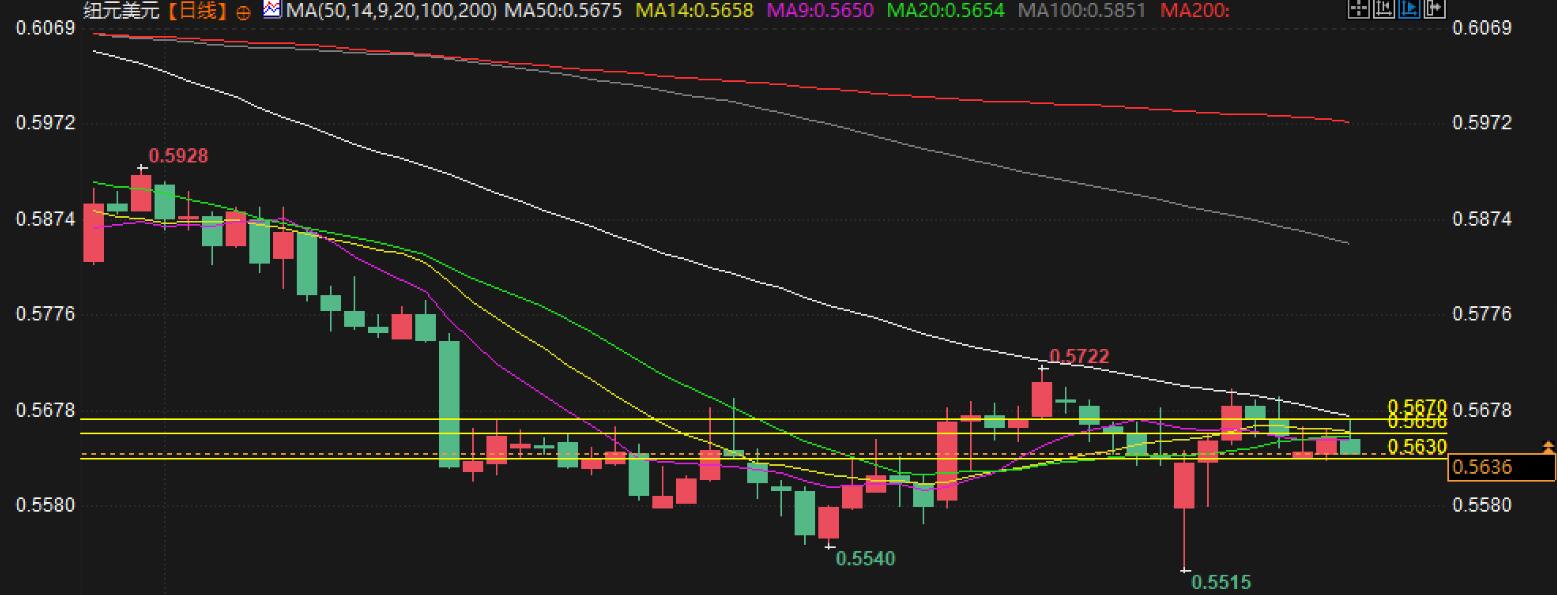Forex Trading Analysis: Interpretation of NZD/USD Volatility Pattern
On Wednesday (February 12th), NZD/USD experienced a brief rise in today's trading, but faced selling pressure again in the past few hours. The current exchange rate is around 0.56400, and the market shows a significant spread. The uncertainty in the global foreign exchange market still puts pressure on the New Zealand dollar/US dollar, especially with the recent release of US economic data and statements from the Federal Reserve, market sentiment has become increasingly cautious.
Last week, the New Zealand dollar/US dollar briefly approached a high of 0.56900, but then the selling market once again dominated. Yesterday, the exchange rate challenged the low of 0.56300. The emotional fluctuations in the global market, especially the potential tariff policies of the United States and the cautious attitude of the Federal Reserve, continue to drive up the safe haven demand for the US dollar, thereby putting pressure on the New Zealand dollar.
Today's focus is on the release of the US Consumer Price Index (CPI) data, which is widely believed to be crucial for the movement of the US dollar. However, the current statements of the Federal Reserve remain cautious, fearing that inflationary pressures may continue. This cautious attitude exacerbates market uncertainty and makes the market more inclined to hold US dollars, thereby affecting the performance of the New Zealand dollar.
In addition, US President Trump's comments on tariffs and trade issues have further exacerbated the unease in the financial markets. Although some New Zealand dollar bulls may believe that the New Zealand dollar/US dollar will perform better in the medium term, the current market environment and the Fed's rhetoric make it difficult to be optimistic about the short-term trend of the New Zealand dollar.
Technical analyst interpretation:
From a technical perspective, the current trend of the New Zealand dollar/US dollar exhibits strong oscillation characteristics. Although the exchange rate has risen in the short term, it has now fallen back to around 0.56400, indicating that market sentiment is highly uncertain. Due to the lack of clear trends, current price fluctuations mainly revolve around support and resistance ranges.
Firstly, the current support level is around 0.56300, which has played a role multiple times since February 4th, demonstrating strong support. This support level is considered a buying area in the short term, especially when the market falls back to this level again, it may attract some buying interest. However, if the price breaks through the support level of 0.56300, it may further drop below 0.56000.

On the other hand, the current resistance is around 0.56700, and the exchange rate has repeatedly touched this area before falling back, indicating strong selling pressure at this level. Whenever the exchange rate approaches this level, the market tends to experience a reversal trend, which means that bearish forces still have a certain advantage before breaking through the resistance level. Therefore, the price range around 0.56700 will continue to receive market attention, and breaking through this position may trigger stronger upward momentum, driving the exchange rate further higher.
Currently, the short-term trend of the New Zealand dollar/US dollar is mainly within a volatile range, lacking a clear upward or downward trend.
Short term technical goals:
Current support level: 0.56300
Current resistance level: 0.56560
High level target: 0.56700
Low level target: 0.56260
If the exchange rate breaks through the resistance level of 0.56700, it may further rise to 0.57000 or higher. But if the exchange rate falls below the support level of 0.56300, it may retest the psychological level of 0.56000. Considering the current market uncertainty, the short-term trend of the New Zealand dollar/US dollar is still full of volatility.
Conclusion:
Overall, the New Zealand dollar/US dollar may continue to show a volatile consolidation trend in the short term, with market sentiment fluctuations and uncertainty in Federal Reserve policies being the main factors affecting the exchange rate trend. The technical aspect shows clear support and resistance ranges, but the market is closely monitoring the upcoming release of US CPI data and changes in global market sentiment. If the Federal Reserve continues to maintain a cautious attitude and US inflation data shows strong performance, the US dollar may further strengthen, thereby affecting the short-term trend of the New Zealand dollar/US dollar.
Tips:This page came from Internet, which is not standing for FXCUE opinions of this website.
Statement:Contact us if the content violates the law or your rights
